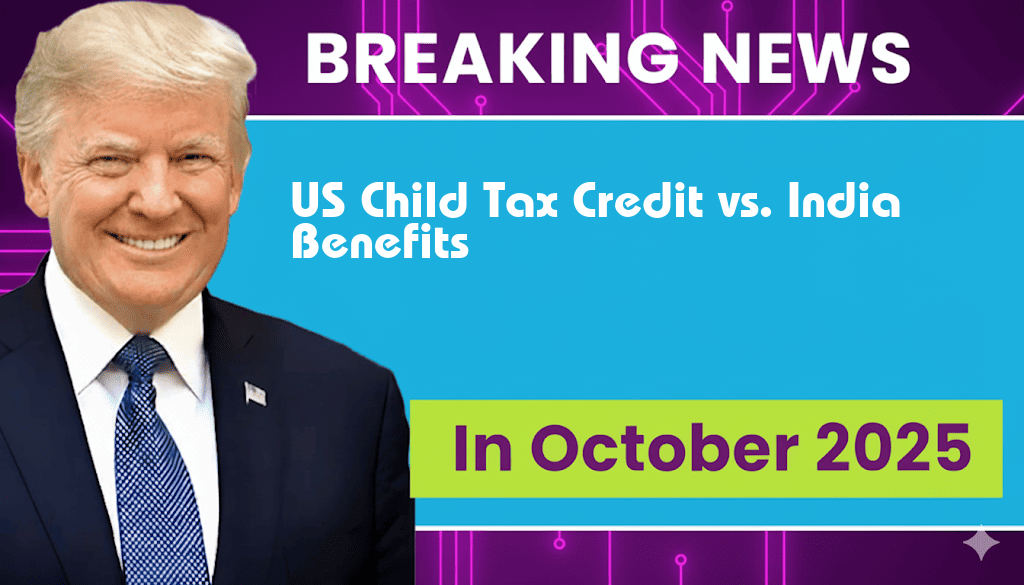The financial support provided to families with children is critical in both the United States and India, albeit structured differently in each country. In the U.S., the Child Tax Credit (CTC) offers up to $2,200 per qualifying child, aimed at alleviating the financial burden on parents. Conversely, India provides a combination of direct benefits and allowances that can total up to ₹1,65,000 (approximately $2,000) annually, depending on various state and central schemes. This comparative analysis delves into the specifics of these two support systems, evaluating their impact on families and the broader implications for social welfare in both nations.
Understanding the Child Tax Credit in the United States
The Child Tax Credit in the U.S. is part of a broader tax relief system designed to help families manage the costs associated with raising children. As of the 2023 tax year, families can claim up to $2,200 for each qualifying child under the age of 17. The credit is phased out for higher-income families, making it particularly beneficial for lower- and middle-income households. Here are some key features:
- Eligibility: Available to parents with children under 17, with income limits that decrease the benefit for higher earners.
- Refundable Credit: Portions of the credit can be refundable, meaning families can receive money even if they owe no taxes.
- Impact: Aimed at reducing child poverty rates, the credit has been linked to improved health and educational outcomes for children.
Child Benefits and Allowances in India
In India, child benefits are more fragmented, consisting of various schemes run by both state and central governments. The total annual benefits can reach up to ₹1,65,000, depending on the child’s age and the specific programs available in different states. Key components include:
- Direct Cash Transfers: Programs such as the Pradhan Mantri Beti Bachao Beti Padhao scheme provide financial assistance for the education and health of girls.
- Subsidized Education: Many states offer free or subsidized education up to a certain level, significantly reducing costs for families.
- Health Benefits: Under the National Health Mission, families can access free healthcare services for children, promoting overall well-being.
Comparative Financial Impact
When comparing the two systems, a direct financial analysis reveals interesting insights. The U.S. Child Tax Credit offers a straightforward sum per child, while India’s benefits depend on various factors, including state policies and family circumstances. The following table summarizes the key financial figures:
| Country | Annual Benefit (Per Child) | Eligibility Requirements | Additional Support |
|---|---|---|---|
| United States | $2,200 | Children under 17, income-based eligibility | Potential for refundable credit |
| India | Up to ₹1,65,000 (approx. $2,000) | Varies by state; programs focused on girls and education | Health services, education subsidies |
Socioeconomic Implications
The implications of these child benefits extend beyond immediate financial relief. In the U.S., the Child Tax Credit is a critical component of federal policy aimed at reducing child poverty rates, which have been a concern for policymakers. Research indicates that the CTC has a significant impact on children’s health and education, fostering better long-term outcomes. For instance, studies have shown that families receiving the CTC are more likely to invest in their children’s education and nutrition.
In India, the diverse range of child benefits reflects the country’s commitment to improving the welfare of children, particularly girls. However, the effectiveness of these programs varies widely across states, leading to disparities in access and support. States that implement comprehensive education and healthcare programs often see better outcomes in child development metrics.
Conclusion
Both the U.S. and India recognize the importance of supporting families with children, albeit through different mechanisms. The Child Tax Credit in the U.S. provides a clear financial benefit, while India’s approach combines various programs to address broader needs. Understanding these differences is crucial for policymakers and advocates working towards improving child welfare in both nations.
Frequently Asked Questions
What is the amount of the Child Tax Credit in the US?
The Child Tax Credit in the US is currently set at $2,200 per eligible child, designed to provide financial support to families.
How does the Child Tax Credit in the US compare to benefits in India?
In India, families can receive benefits worth ₹1,65,000, which is aimed at providing assistance similar to the Child Tax Credit in the US, but the amount and structure of the benefits differ significantly.
Are there eligibility criteria for receiving the Child Tax Credit in the US?
Yes, to qualify for the Child Tax Credit in the US, families must meet certain income thresholds and other criteria set by the IRS.
What types of benefits are provided in India for families?
In India, families may receive various benefits including direct cash transfers, subsidies, and tax exemptions, totaling up to ₹1,65,000 for child-related expenses.
How do the tax systems in the US and India impact these benefits?
The tax systems in both countries influence the amount and accessibility of benefits, with the US providing a Child Tax Credit that directly reduces tax liability, while India’s system includes a mix of cash and non-cash benefits.

Leave a Reply